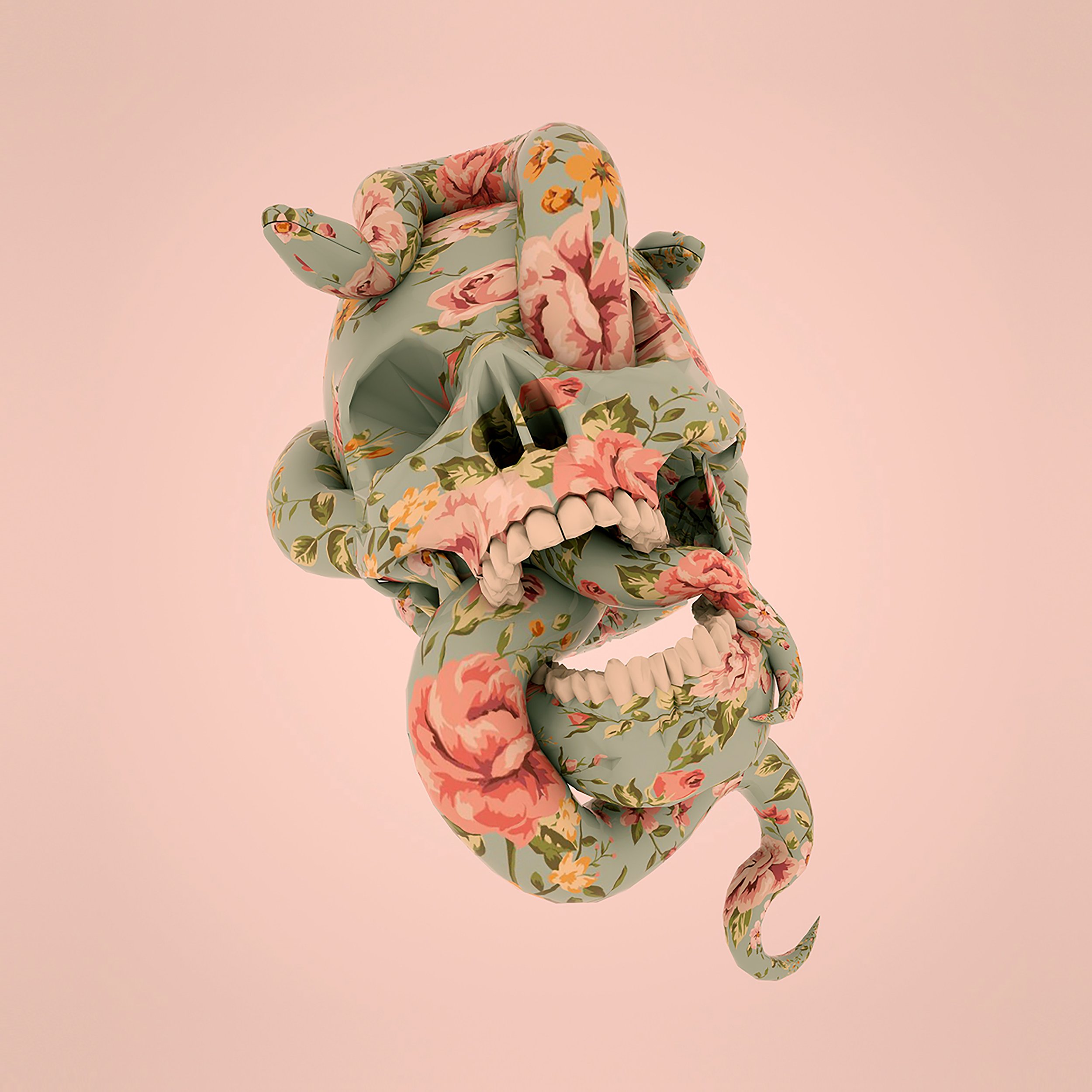Skullflowers, 2018
Skullflowers marks a distinctive visual trend in my work. The composition depicts two snakes coiled around a human skull, both adorned in a mint green vintage floral pattern and positioned against a dusty rose background. The skull's geometric planes and sharp edges unmistakably reveal its digital origins, while the sinuous movements of the snakes through the cranial cavities intensify the macabre undertone. The delicate foliage of the pattern infuses a softness into the composition, and the animated upward movement of the texture creates an uncanny psychedelic effect.
The name playfully riffs on the colloquial term 'wallflower.' A 'Wallflower' traditionally remains in the background, observing events unfold. However, in this instance, death presides, prompting the question: for whom does the bell toll? As a species, we are witnessing the growing tension between human agency and technological advancements like AI. The smooth surface of the CG skull gives no indication of time's passage, raising questions about our human condition in this digital age. Will the relentless advancement of technology render the sacred human obsolete? Or will we be compelled to confront the spiritual vacuity of the hyper-rational electronic mind?
2018, I participated in the groundbreaking exhibition Spatial Reality: Artists Explore the Future of XR at Sp[a]ce gallery in LA. Jesse Damiani and Britt Salvesen, the show's curators, brought together an impressive lineup of over twenty-five renowned artists. For this occasion, Skullflowers took form both digitally and materially. The exhibition showcased the composition in various formats, including a triptych, a 3D printed sculpture, a VR piece, and a video projection. The triptych and hand-painted 3D-printed sculpture were collected by Eric Ayzenberg of the Ayzenberg Group.

